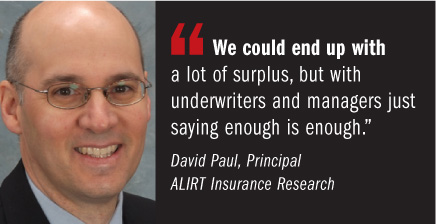In spite of competitive conditions in the specialty program business segment, an insurance industry analyst doesn't see any flashing red alerts signaling major troubles ahead for program carriers so far in 2011.
David Paul, a principal for ALIRT Insurance Research, LLC in Windsor, Conn., gave NU a glimpse last week of the proprietary scoring method that his firm uses to analyze the financial strength of roughly 1,600 property and casualty insurance companies.
 For the most part, the scores reveal that program carriers are as healthy as carriers playing in other industry segments, with only a handful of insurers looking weaker than they did a decade ago.
For the most part, the scores reveal that program carriers are as healthy as carriers playing in other industry segments, with only a handful of insurers looking weaker than they did a decade ago.
Recommended For You
Want to continue reading?
Become a Free PropertyCasualty360 Digital Reader
Your access to unlimited PropertyCasualty360 content isn’t changing.
Once you are an ALM digital member, you’ll receive:
- Breaking insurance news and analysis, on-site and via our newsletters and custom alerts
- Weekly Insurance Speak podcast featuring exclusive interviews with industry leaders
- Educational webcasts, white papers, and ebooks from industry thought leaders
- Critical converage of the employee benefits and financial advisory markets on our other ALM sites, BenefitsPRO and ThinkAdvisor
Already have an account? Sign In Now
© Touchpoint Markets, All Rights Reserved. Request academic re-use from www.copyright.com. All other uses, submit a request to [email protected]. For more inforrmation visit Asset & Logo Licensing.







